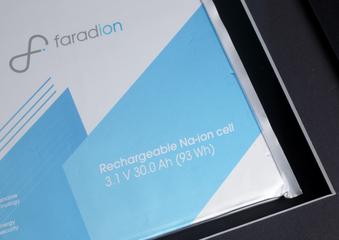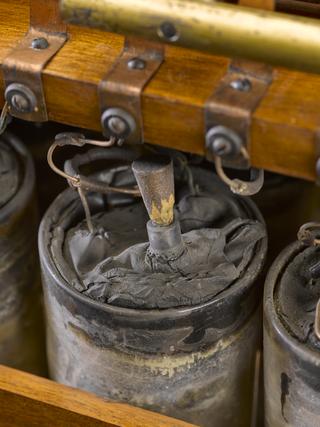
'Manchester' dynamo, around 1886.
- Made:
- circa 1886 in Salford
- maker:
- Mather and Platt Limited







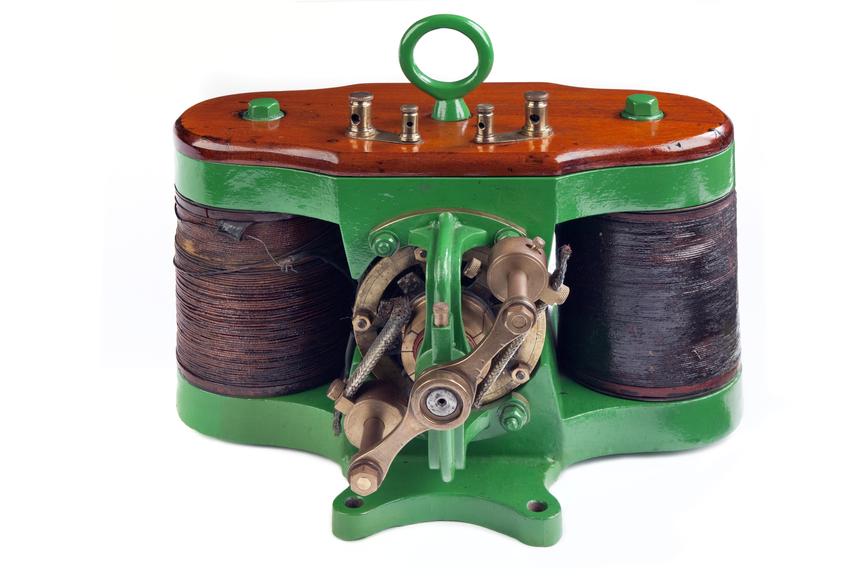

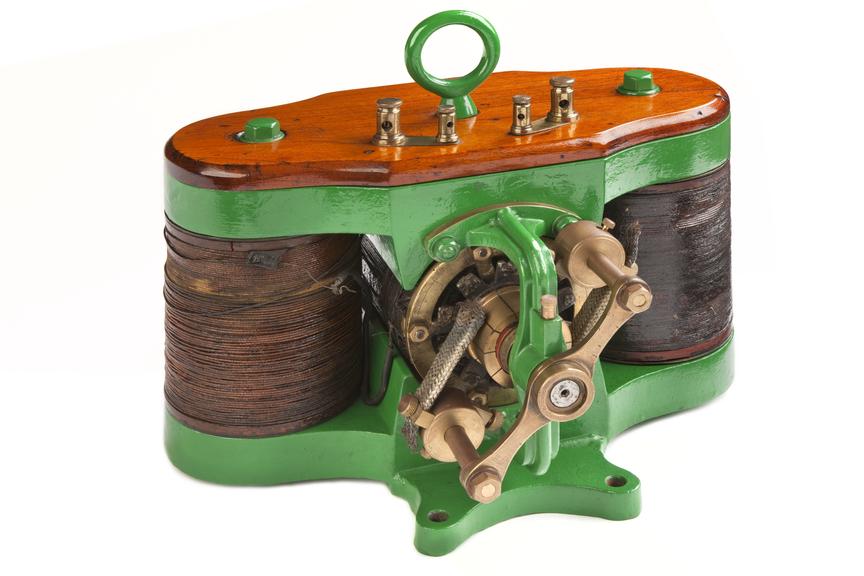

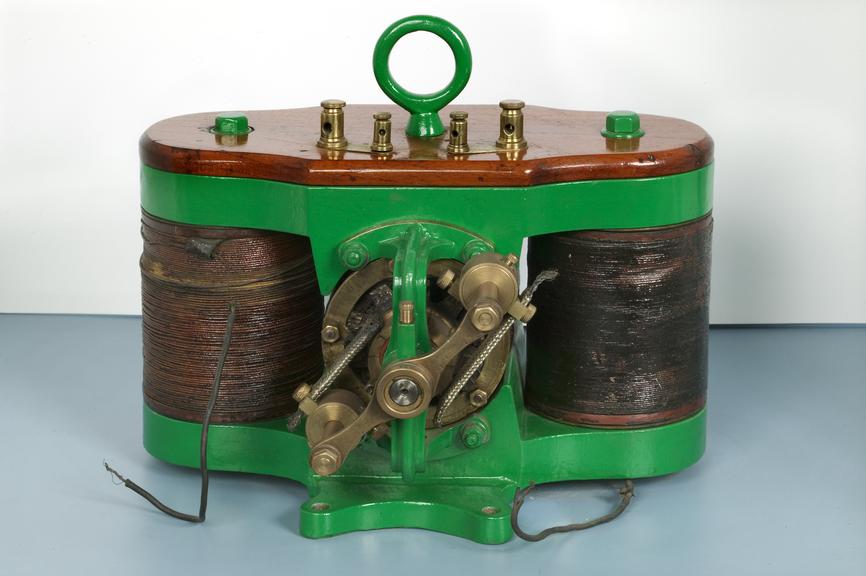
Green-painted ‘Manchester’ dynamo generator. Made in Salford by Mather & Platt Ltd in Salford in 1886.
By the 1880s, electric lighting was the must-have innovation for any self-respecting town. Giants of electricity Tesla, Edison and Westinghouse fought a battle of the currents over the safe transmission of high voltage electricity from power station to customer.
Sebastian Ziani de Ferranti built the world’s first central power station at Deptford. He used alternating current (AC) to power London. Whereas in Manchester, engineer Dr John Hopkinson chose direct current (DC) to deliver electricity to customers.
In 1882, Mather & Platt won an exclusive licence to manufacture Thomas Edison’s DC generator, the Edison Dynamo. A dynamo is a machine that converts mechanical energy into electrical power.
John Hopkinson tested the Edison dynamos at Mather & Platt’s Salford Ironworks. Hopkinson improved Edison’s design, creating the Edison-Hopkinson Dynamo. In doing so, he introduced major innovations, reducing size, increasing output and improving efficiency.
Hopkinson and his brothers went on to develop the Manchester dynamo. It was based on the first commercially successful electrical power generator, the Gramme dynamo. The Manchester design created a more intense magnetic field. This meant that electricity could be generated at a higher output and more efficiently. Its main use was in textile mills.
Details
- Category:
- Electricity Supply
- Object Number:
- Y7000.3310
- Materials:
- wood (unidentified), brass (copper, zinc alloy), copper (alloy) and metal (unknown)
- Measurements:
-
Overall: 350 mm x 400 mm x 450 mm, 85 kg
- type:
- direct current generator
- credit:
- Anonymous Donor
